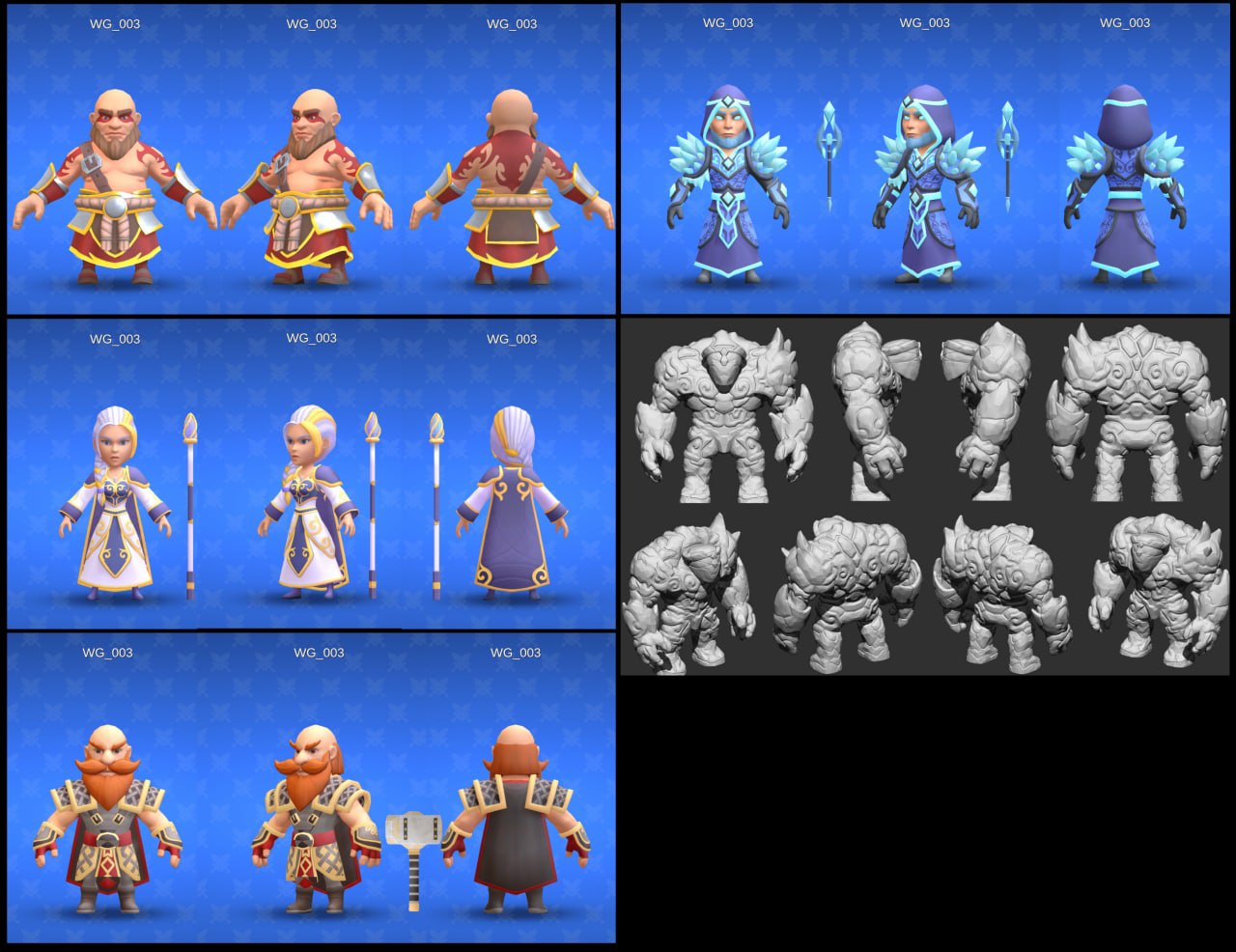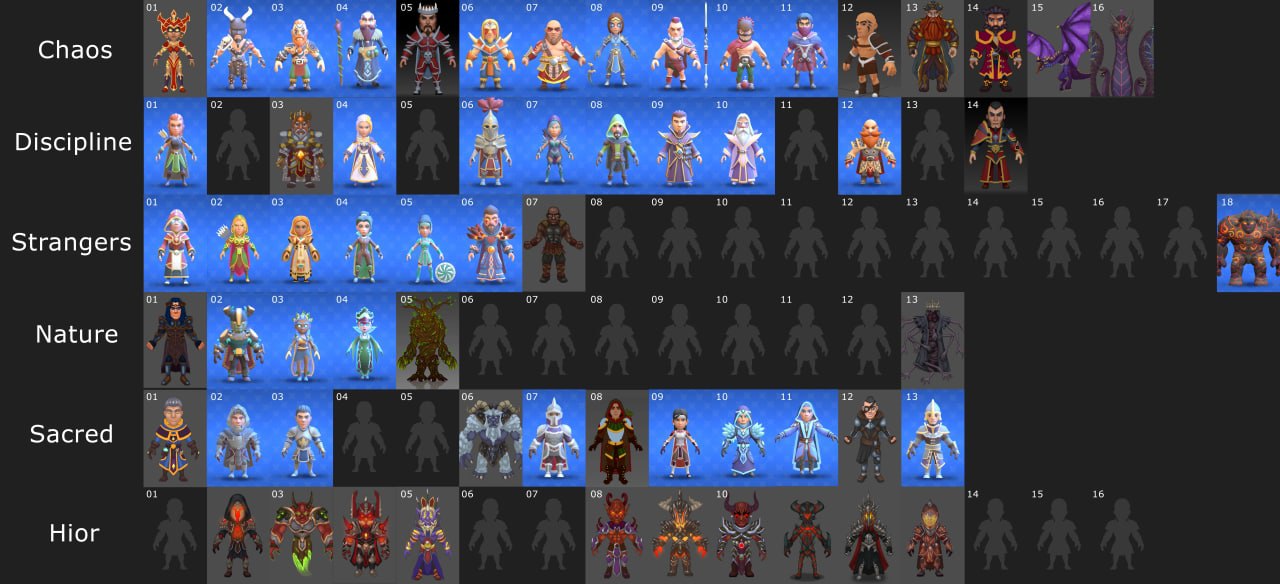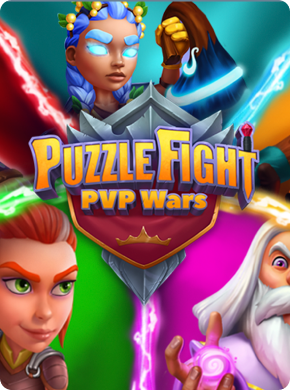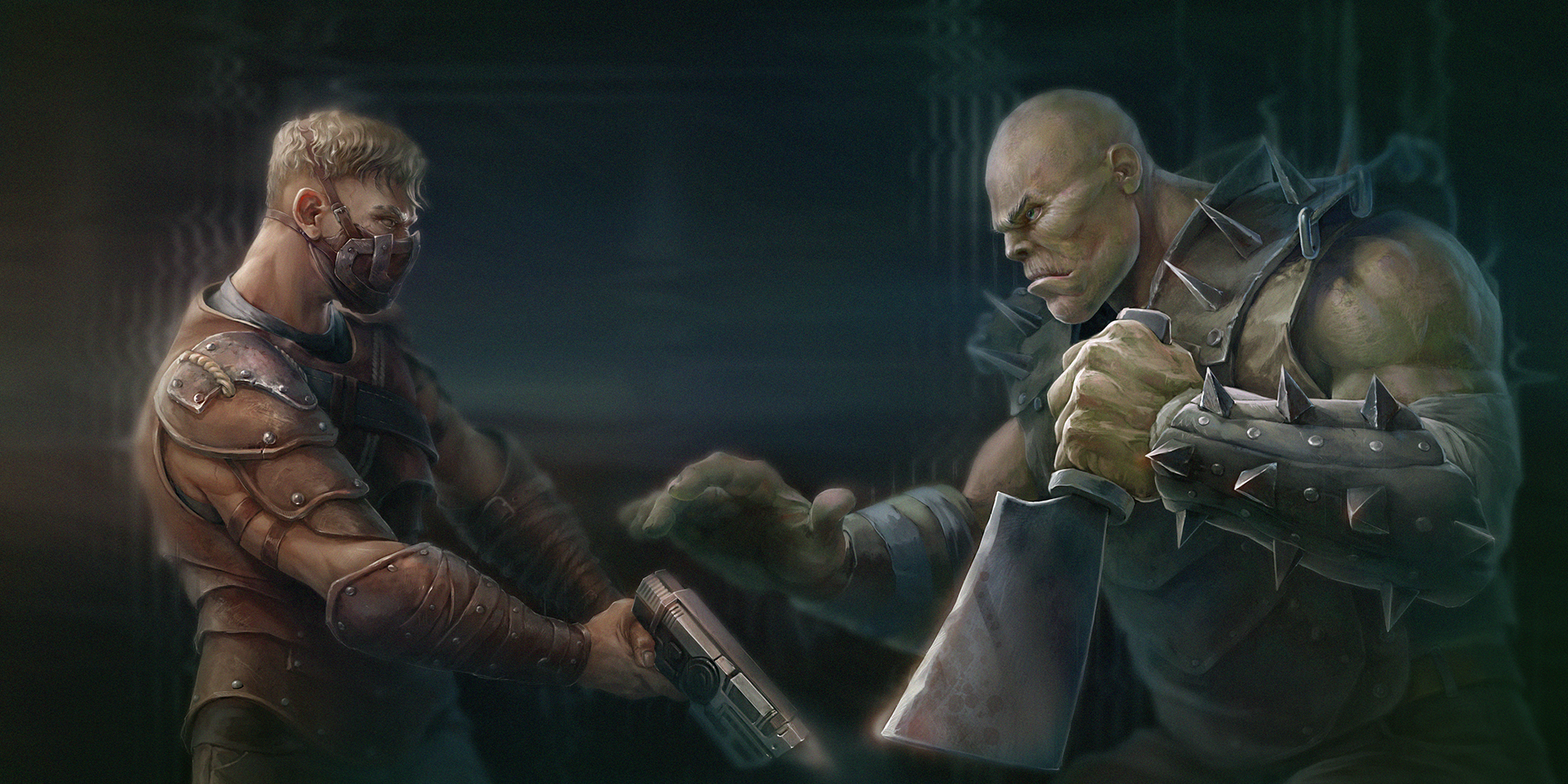Intro
Legends of Rodhim – Rodrim lands felt deep into ancient war against hordes of the darkness. Gather a squad of heroes to face armies of terrific creatures and bring a feeling of peace again to the land of the continent.
It’s an idle battler in a fantasy setting with blockchain integration. The goal was to create 80+ characters in 6 months to create enough fractons for the calculated balance of the game.
Our Contribution
Challenges & Goals
The main goal was to prepare six fractions of different styles and cultures with a couple of preset roles in each. The complex thing here was the time-to-market strategy and delivery terms of 6 months. In addition to characters, we had to prepare three seamless locations.
Solutions & Expertise
The best approach for such tasks is to prepare a reboard and mood board to determine the main fractions, their style, and colors. The more recognizable fractions were taken as a base.
The next step is to set up the right team and management to produce 3d models.
Managing the main pipeline gave us options to produce animations in parallel and provide ready-made characters to the development team to start implementing skills and animations.










